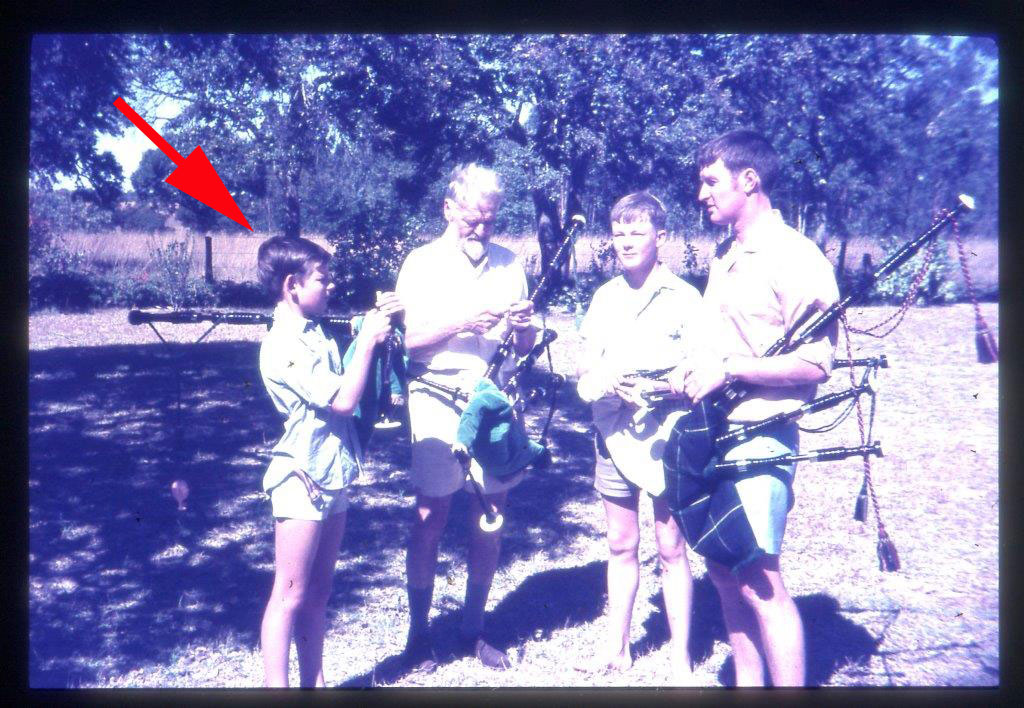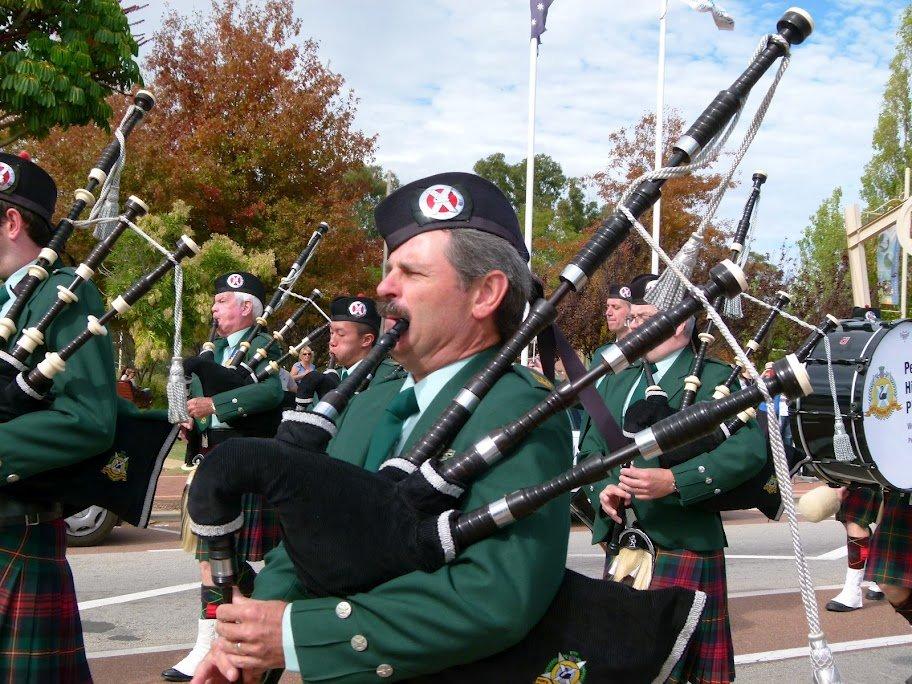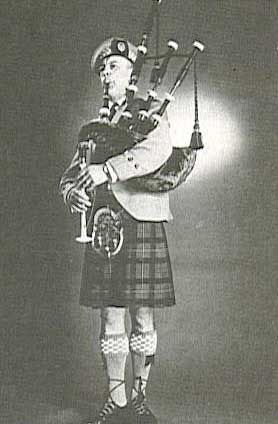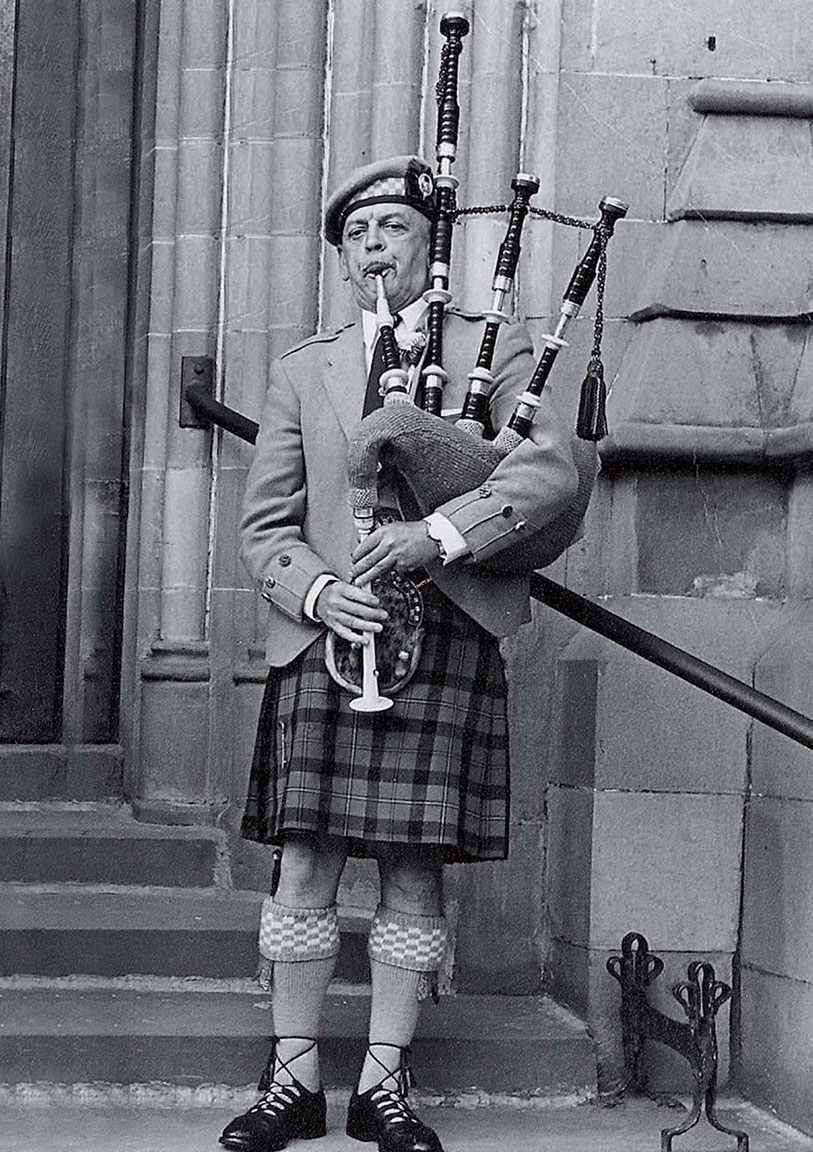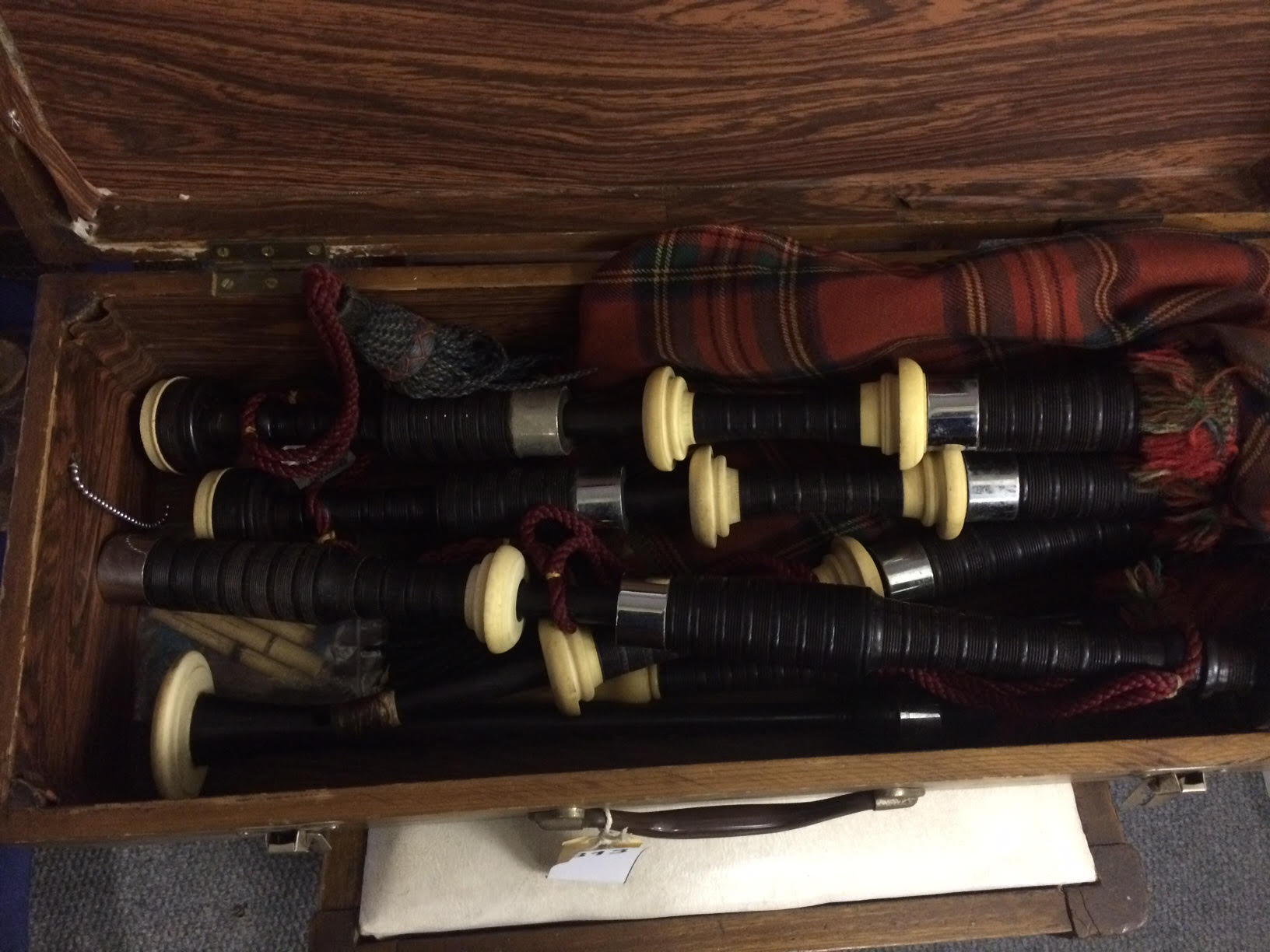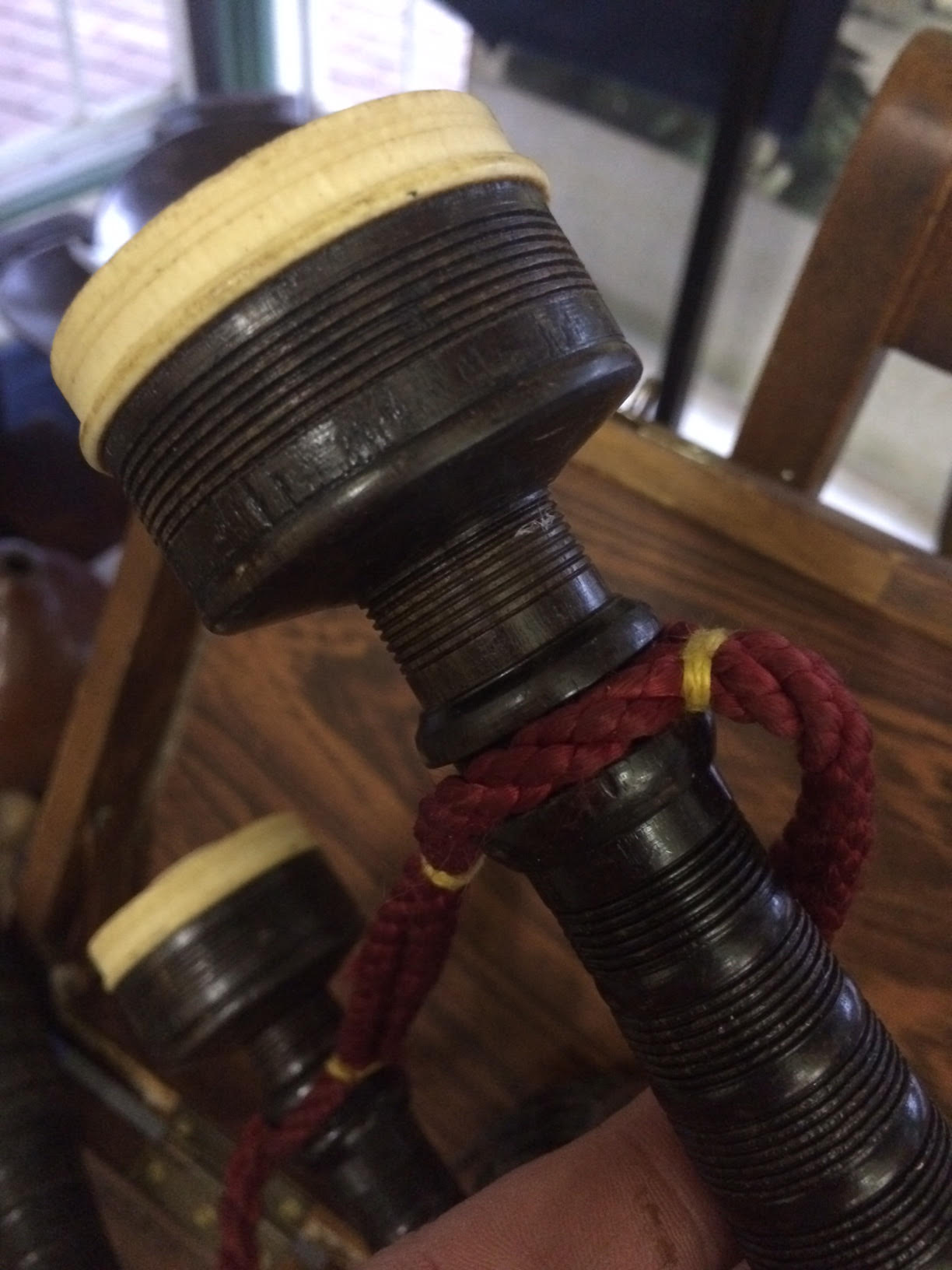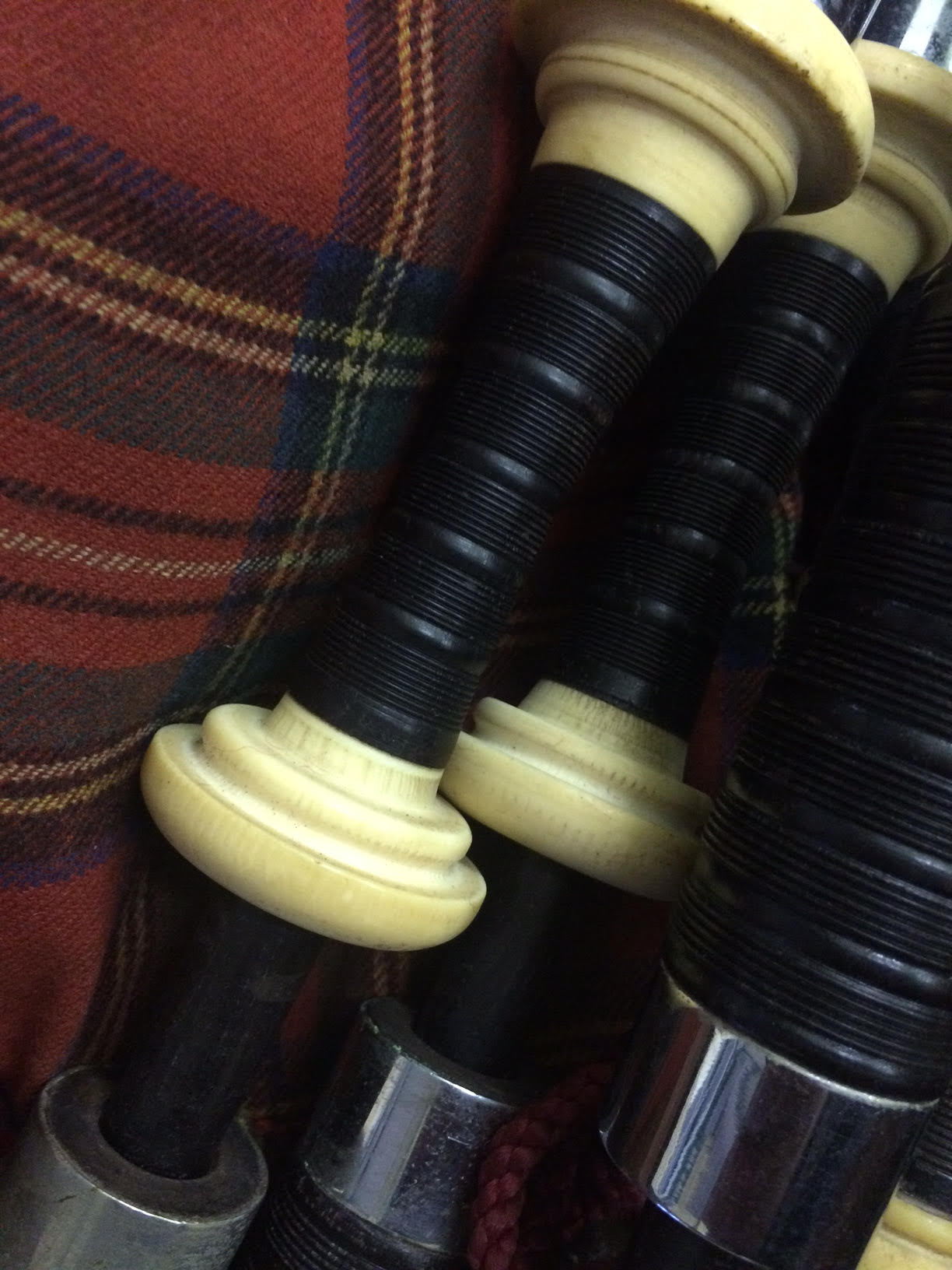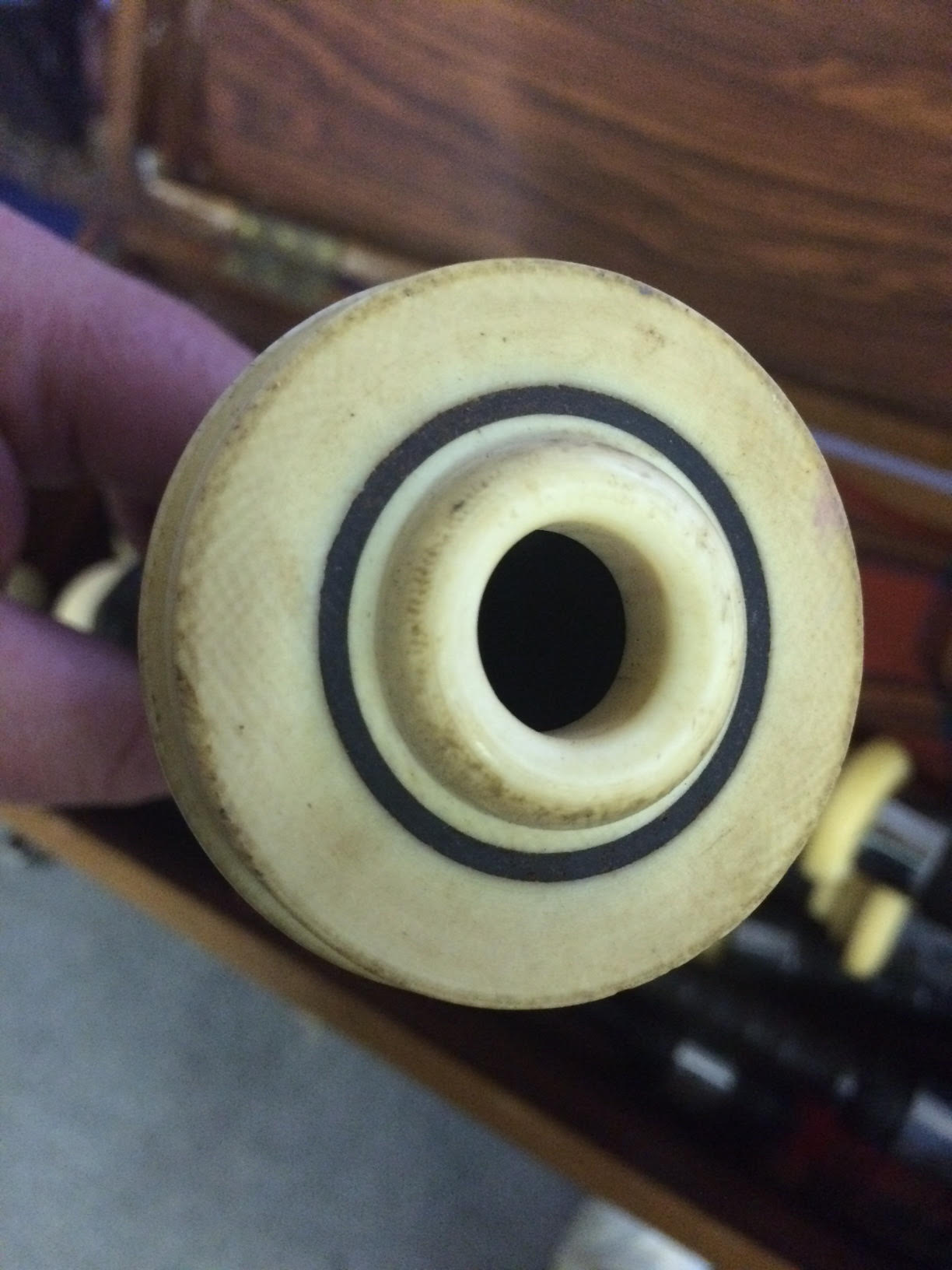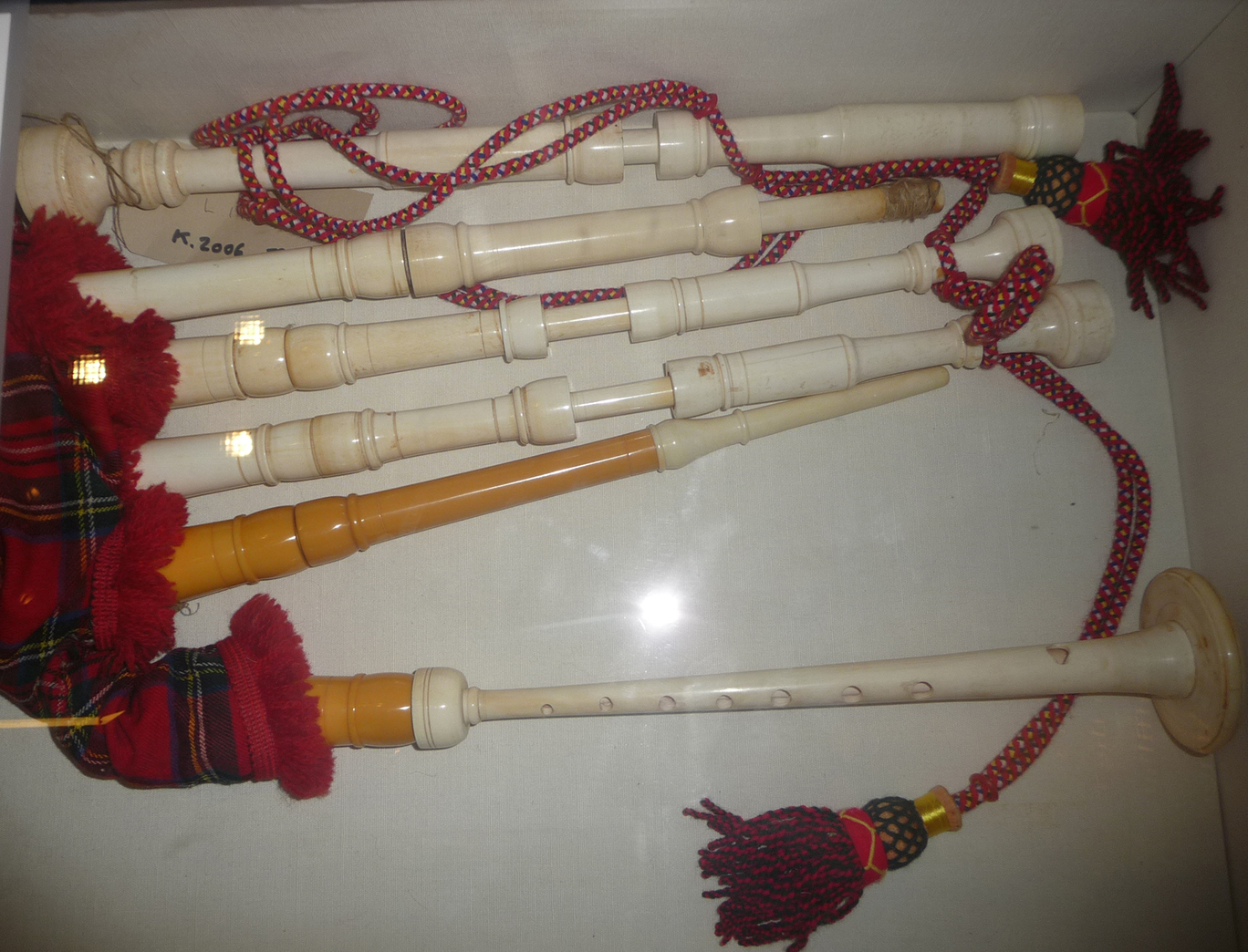Fred Sandeman was born 26th Jan 1893 in Edinburgh. Mr. Keith Allan of Perth, Western Australia reached out to me in May 2014 and was kind enough to share the following information.
"Fred made pipes is the 1970's in Rhodesia (now Zimbabwe) on an old treadle lathe. As a 15 year old a friend and I travelled to his farm to take possession of our new pipes in about 1969. (The red arrow is pointing to the author, Mr. Allan. Fred Sandeman is the bearded gentleman.) The pipes he made were ABW, generally dressed with nickel ferules, wood mounts (both button and projecting) and ivory ring caps. The chanters also had ivory soles.
He also made a set of full ivory pipes which is now in the NPC museum in Scotland. When I say full ivory, I mean every piece stick stock and chanter were made of ivory.
His pipes have a great 'Henderson' type sound. I am not sure where he learnt his turning skills."
I'll pause here for a moment. I passed this information on to Jeannie Campbell for inclusion in her excellent book More Highland Bagpipe Makers. Jeannie did what Jeannie does and drilled down on Sandeman's life. (She is amazing!) He served in the Argyll and Sutherland Highlanders and later in the Cameron Highlanders. He was taken prisoner in 1917 and served the remainder of the war as such. He was subsequently awarded the Military Cross
Keith Allan continued..."Fred was a Great War veteran where he earned his M.C. I am not sure which regiment he served in but I can find out. He has had a couple of tunes named after him. The Scots Guards play one called Echoes from Caithness - Ciamar a Tha Thu - Fred S. Sandeman M.C. which I believe is in Donald MacLeods Book 1 and also one written by William MacDonald of Inverness, called Fred S. Sandeman M.C.
Peter MacLeod Jnr lived in Rhodesia before during and after WWll. There are photos of him playing a white pipe chanter made by Sandeman. One can safely assume that a high quality player like Peter MacLeod Jr would only use a very good chanter, which says something about the tonal quality of Fred's pipes."
"Fred made pipes is the 1970's in Rhodesia (now Zimbabwe) on an old treadle lathe. As a 15 year old a friend and I travelled to his farm to take possession of our new pipes in about 1969. (The red arrow is pointing to the author, Mr. Allan. Fred Sandeman is the bearded gentleman.) The pipes he made were ABW, generally dressed with nickel ferules, wood mounts (both button and projecting) and ivory ring caps. The chanters also had ivory soles.
He also made a set of full ivory pipes which is now in the NPC museum in Scotland. When I say full ivory, I mean every piece stick stock and chanter were made of ivory.
His pipes have a great 'Henderson' type sound. I am not sure where he learnt his turning skills."
I'll pause here for a moment. I passed this information on to Jeannie Campbell for inclusion in her excellent book More Highland Bagpipe Makers. Jeannie did what Jeannie does and drilled down on Sandeman's life. (She is amazing!) He served in the Argyll and Sutherland Highlanders and later in the Cameron Highlanders. He was taken prisoner in 1917 and served the remainder of the war as such. He was subsequently awarded the Military Cross
Keith Allan continued..."Fred was a Great War veteran where he earned his M.C. I am not sure which regiment he served in but I can find out. He has had a couple of tunes named after him. The Scots Guards play one called Echoes from Caithness - Ciamar a Tha Thu - Fred S. Sandeman M.C. which I believe is in Donald MacLeods Book 1 and also one written by William MacDonald of Inverness, called Fred S. Sandeman M.C.
Peter MacLeod Jnr lived in Rhodesia before during and after WWll. There are photos of him playing a white pipe chanter made by Sandeman. One can safely assume that a high quality player like Peter MacLeod Jr would only use a very good chanter, which says something about the tonal quality of Fred's pipes."
The style of this Sandeman bagpipe reflects the influence of James Robertson.
This last example of a Sandeman bagpipe has mounts and drone tops shaped in a thistle pattern. Again we see the small, well-rounded bead and the plain ferrules. Distinctive.
Fred Sandeman
